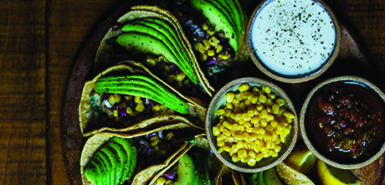
The gluten-free diet has gained much popularity in recent years, with people eliminating it from their diets for various reasons.
But is it a necessary restriction?
Gluten is a protein found in wheat, rye and barley.
People diagnosed with celiac disease—a genetic, autoimmune disorder—must eliminate all forms of gluten from their diet to avoid the damage that ingesting gluten causes to the lining of the small intestine.
This damage can contribute to malabsorption of nutrients, which can further impact one’s health. The only treatment for celiac disease is a strict, gluten-free diet.
If a person does not have celiac disease or an intolerance to wheat, it’s not necessary to avoid gluten—especially because gluten is found in many nutritious foods that add variety to a diet.
And it can be a challenge to eliminate gluten from your diet.
It’s a time-consuming process. You must learn to identify foods that contain gluten, which involves reading labels, learning sources of cross-contamination and discovering resources to support ongoing success.
However, it’s important to remember there are many natural gluten-free foods. This can relieve the stress of navigating the new diet, as well as integrating the diet into family meals.
It can be easier to transition to a gluten-free diet by focusing on allowed foods, regardless of whether they’re naturally gluten-free.
Some foods that are naturally gluten-free: plain meats, nuts, fruits, vegetables and dairy products. These are all simple, healthy components to a gluten-free diet.
Gluten-free grains include amaranth, corn, rice, quinoa, millet, sorghum and teff.
Oats, which are naturally gluten free, should only be consumed if they have been certified gluten-free. This is because oats can be contaminated by wheat during the growing and processing stages.
It’s important to focus on nutritional adequacy with a gluten-free diet, given that many gluten-free products are not nutritionally equivalent to their gluten-containing counterparts.
Many gluten-free products are low in fiber—therefore less satisfying—and they may have a higher fat content to improve the texture of the product.
 /a>
/a>
 /a>
/a>
 /a>
/a>
Thank you for this great explanation/information about gluten and the role it plays in nutrition.
Thank you Kathy for the article!
Great article. The natural gluten free foods are the perfect way to eat!